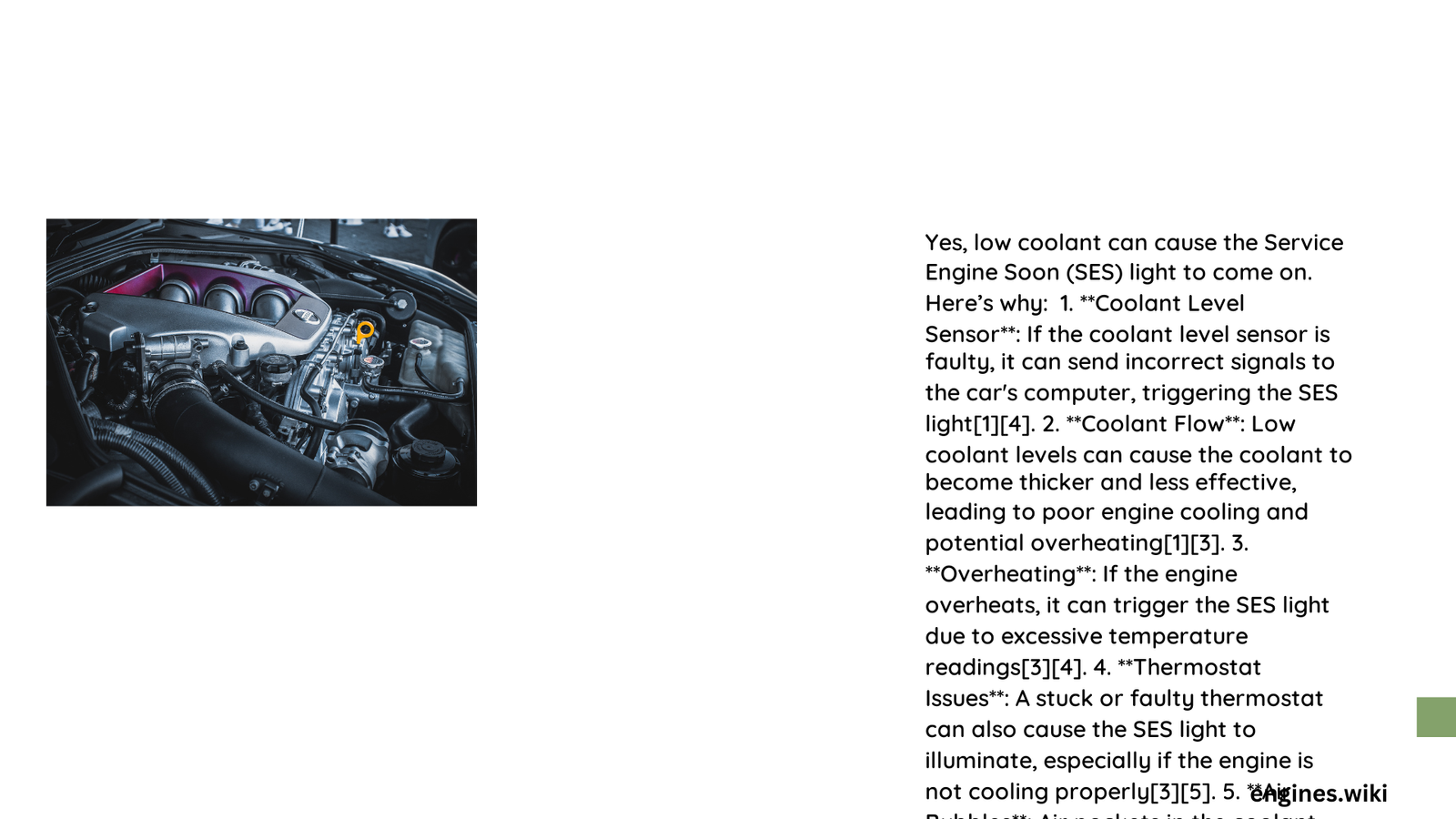Low coolant levels can potentially cause your vehicle’s service engine soon (SES) light to illuminate, signaling critical engine system complications. While not always a direct indicator of low coolant, this warning light emerges when engine temperature sensors detect abnormal operating conditions, potentially triggered by insufficient coolant that compromises thermal regulation and overall engine performance.
What Connects Low Coolant to Service Engine Soon Light?
How Do Coolant Levels Impact Engine Warning Systems?
Vehicle engines rely on precise thermal management, and coolant plays a crucial role in maintaining optimal temperature. When coolant levels drop significantly, multiple sensor systems can activate warning indicators, including the service engine soon light.
Key Diagnostic Insights
| Coolant Level | Potential Warning Indicators | Risk Level |
|---|---|---|
| Normal Range | No Warning | Low Risk |
| Slightly Low | Coolant Level Warning | Moderate Risk |
| Critically Low | Service Engine Soon Light | High Risk |
What Triggers Service Engine Soon Light with Low Coolant?
Several interconnected mechanisms can cause the service engine soon light to activate when coolant levels are insufficient:
- Temperature Sensor Activation
- Engine control unit (ECU) monitors coolant temperature
- Significant temperature fluctuations trigger warning systems
-
Abnormal readings prompt service engine soon light
-
Thermal Stress Indicators
- Reduced coolant prevents effective heat dissipation
- Potential risk of engine overheating
- ECU interprets thermal stress as potential system malfunction
What Are Common Diagnostic Codes Related to Coolant Issues?
Specific diagnostic trouble codes (DTCs) provide insights into coolant-related problems:
- P0217: Indicates engine overheating
- P0128: Suggests coolant temperature below recommended threshold
- C1211/C1213: Specific low coolant level sensor warnings
How to Diagnose and Resolve Coolant-Related Service Engine Soon Light?
Recommended Diagnostic Steps
- Visual Inspection
- Check coolant reservoir levels
- Examine for visible leaks
-
Inspect radiator and cooling system components
-
Professional Diagnostic Scan
- Use OBD-II scanner to read specific trouble codes
- Determine precise cause of service engine soon light
- Identify potential system complications
What Are Potential Repair Costs?
Repair costs vary based on specific issues:
- Coolant reservoir replacement: $50 – $200
- Radiator hose replacement: $50 – $500
- Water pump replacement: $300 – $1,000
What Preventive Measures Can Protect Your Engine?
- Regular coolant level checks
- Scheduled cooling system maintenance
- Immediate response to warning indicators
- Professional annual cooling system inspection
Critical Recommendations

- Never ignore service engine soon light
- Address coolant issues promptly
- Maintain recommended coolant levels
- Use manufacturer-specified coolant mixtures
Pro Tip: Low coolant doesn’t always directly cause service engine soon light, but it significantly increases risk of system complications that trigger warnings.
When to Seek Professional Help?
- Persistent service engine soon light
- Visible coolant leaks
- Frequent overheating
- Unusual temperature gauge behavior
Reference:
– Stoneacre Motor Group Coolant Guide
– J.D. Power Coolant Warning Insights
– RepairPal Diagnostic Resources
